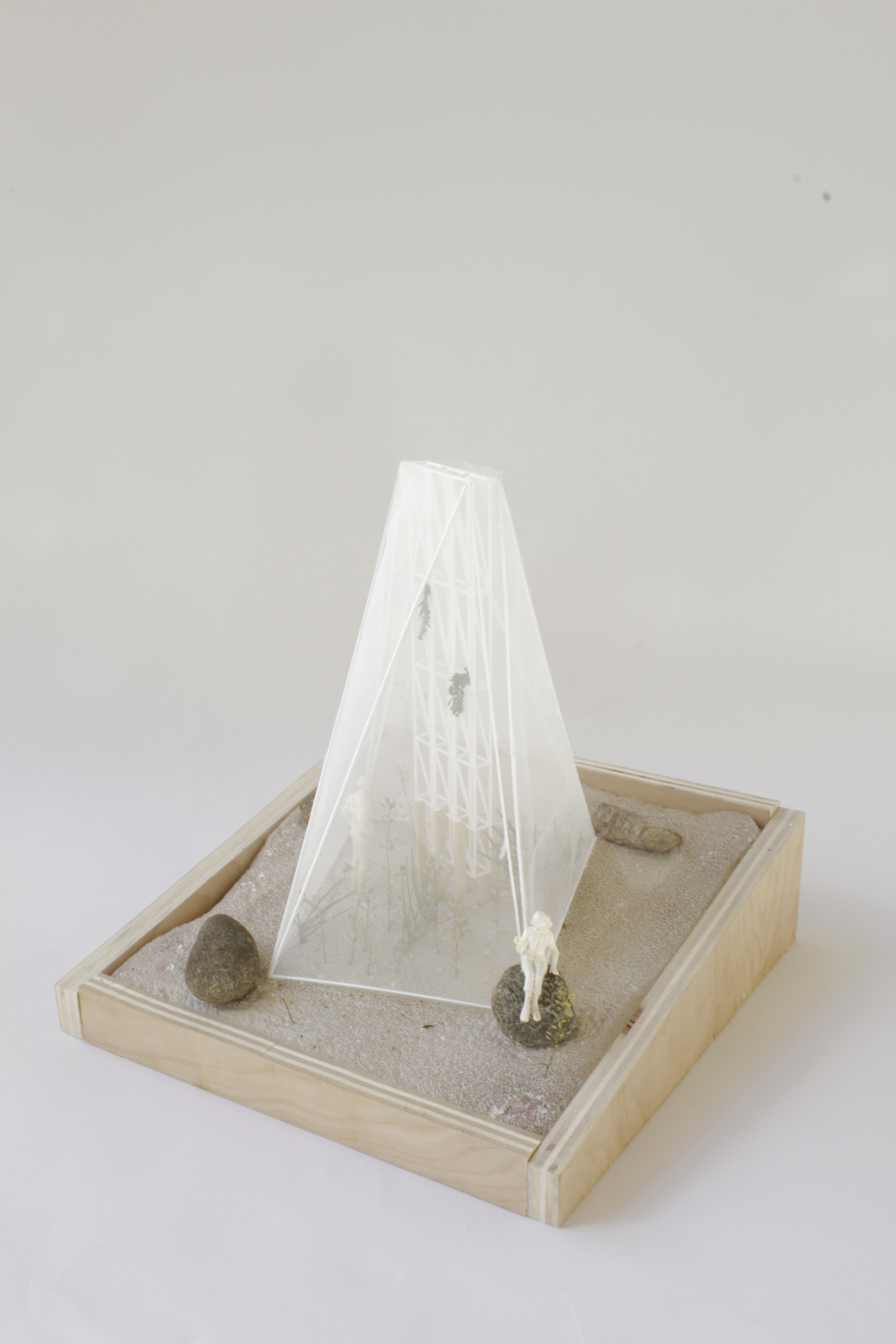











Community Fog Catcher
Community Fog Catcher
A Community-Built Project Collects Water Through Fog and Promotes Urban Agriculture in the Informal Neighborhoods of Bogotá, Colombia.
Design by: Alsar Atelier + Oscar Zamora+ Caesar Salomon
Construction Year: 2022
Location: Bogotá, Colombia
Area: 25m2
In the heart of the informal neighborhood of San Luis, a community has come together to create a groundbreaking project that harvests fog water and promotes ecofriendly urban agriculture practices. Through innovation and sustainability, the project challenges traditional construction methods in self-built landscapes of Colombia. This inspiring community-built prototype showcases resilience and ingenuity in the self-built environment, empowering local community members and inspiring positive changes in the neighborhood. It's a shining example of what can be achieved when a community works together towards a common goal, creating a brighter, more sustainable future through design.
In the informal neighborhood of San Luis, a community-built project has emerged, showcasing the power of collaboration and innovation. The project is an inhabitable prototype designed to harvest fog water and promote urban agriculture practices in the informal environments of Colombia. The project was made possible through the collaborative effort of Alsar-Atelier, Oscar Zamora, Caesar Salomon, the Colombian Society of Architects, and participation of local community members.
The project was initiated was by Caesar Salomon and Alejandro Saldarriaga, a leader of “Maya Tejedores de la Tierra”, who organized the donation of a prototype that could harvest fog water to Edison Plazas, resident of the San Luis Barrio that lacked the access to the local aqueduct system. The idea took root, and the community members and the team of designers joined hands to make the prototype a reality.
A noteworthy feature of this project is its critical position against traditional construction methods informal neighborhoods. In fact, it introduces gauge steel frames as an alternative construction material for the self-built environment, promoting sustainable and eco-friendly construction practices. This innovative construction process challenges the traditional way of building homes in self-built neighborhoods and requires no constructive knowledge for its assembly. By using this approach, the project aims to create a sustainable model for construction that can be replicated in other informal neighborhoods and replace the use of brick and concrete.
The construction of the prototype was accomplished by four community members, Caesar Salomon, Edison Plazas, Nelson Gomez, and Diego Reyran. These individuals were able to carry out the construction of the prototype without the use of heavy machinery or concrete, speaking to the project’s accessibility. By using a white fabric (polisoimbra) in the prototype's façade, the water present in fog is able to be condensed an later recollected with a system of PVC tubes placed in the bottom part of the prototype.
The collected water is used for domestic purposes such as cleaning and washing, which reduces the community's dependence on municipal water sources. The water is also used for irrigation in the greenhouse, promoting urban agriculture and creating an ideal microclimate for plant growth.
This community-built prototype has become a landmark in the San Luis neighborhood, empowering local community members and giving visibility to the project's participants. The project has also provided an opportunity for the local community to learn new construction techniques that promote sustainability. This prototype serves as an example of resilience within the self-built environment, showcasing that innovative and sustainable construction methods are possible even in challenging conditions.
Moreover, the project has brought about positive changes in the San Luis neighborhood. By promoting urban agriculture and reducing the community's dependence on municipal water sources, the project has helped to improve food security and access to clean water. The project has also inspired other community members to take action and come up with their innovative solutions to address the challenges faced by the community.
In conclusion, the San Luis community-built project demonstrates the power of collaboration, innovation, and sustainability. By introducing gauge steel frames and white fabric to collect water and promote urban agriculture, this project challenges traditional construction methods and creates a sustainable model that could be replicated worldwide. Furthermore, it highlights the potential of the self-built environment and provides an example of resilience and ingenuity within the community. The project has not only empowered local community members but has also inspired positive changes in the San Luis neighborhood, making it a model for other informal neighborhoods around the world.
